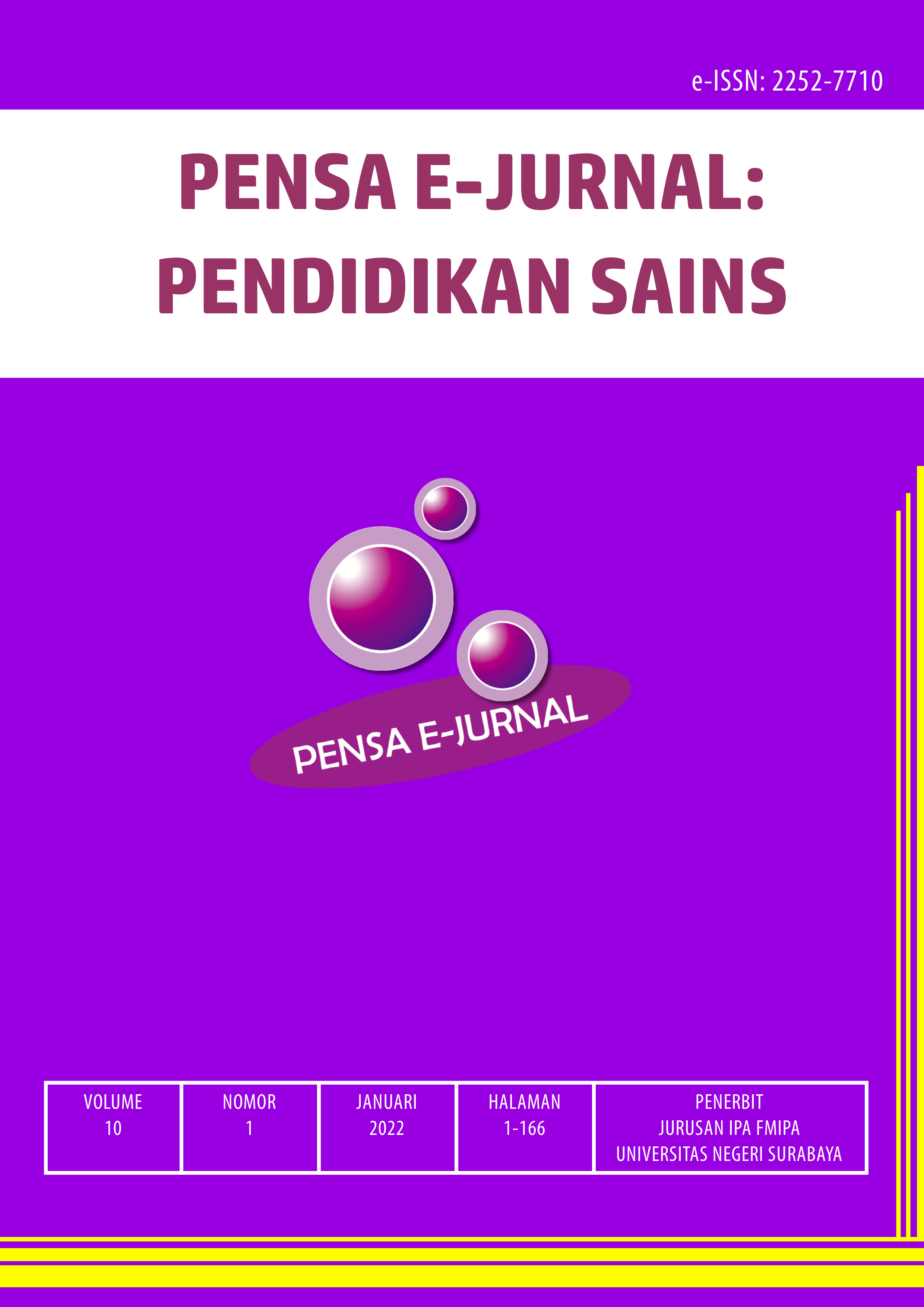PENERAPAN MODEL PEMBELAJARAN KONSEP BERBANTUAN LKS MIND MAPPING UNTUK MENINGKATKAN PEMAHAMAN KONSEP SISWA SMP PADA MATERI GETARAN DAN GELOMBANG
DOI:
https://doi.org/10.26740/pensa.v10i1.41634Keywords:
concept learning model, mind mapping, vibration and wavesAbstract
This study aims to describe the application of the conceptual learning models assisted by Mind Mapping worksheet to improve junior high school students' understanding of vibration and wave material. The research design used a one group pretest-posttest design. Data were collected at SMPN 3 Sidoarjo which was taken from two classes, namely class VIII-B as the experimental class and class VIII-D as the replication class where each class had 25 students. The results of this study are in the form of increased understanding of students' concepts and student responses related to applied learning. The results of the level of understanding of students' concepts about vibrations and waves were tested with N-Gain and the results were that more than half of the students in each class were in the high category. This value indicates that the level of students' understanding has increased. Students' responses to the learning process can be seen from the recapitulation of the questionnaires filled out by students after attending the lesson until the end. The recapitulation results show a positive response and all indicators of the success of the learning process are in the very good category. The conclusion that can be drawn is that the concept learning model assisted by the Mind Mapping worksheet on vibration and wave material can improve the conceptual understanding of junior high school students.
Downloads
Downloads
Published
How to Cite
Issue
Section
 Abstract views: 656
,
Abstract views: 656
, PDF Downloads: 617
PDF Downloads: 617

















